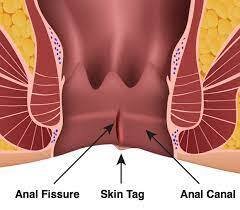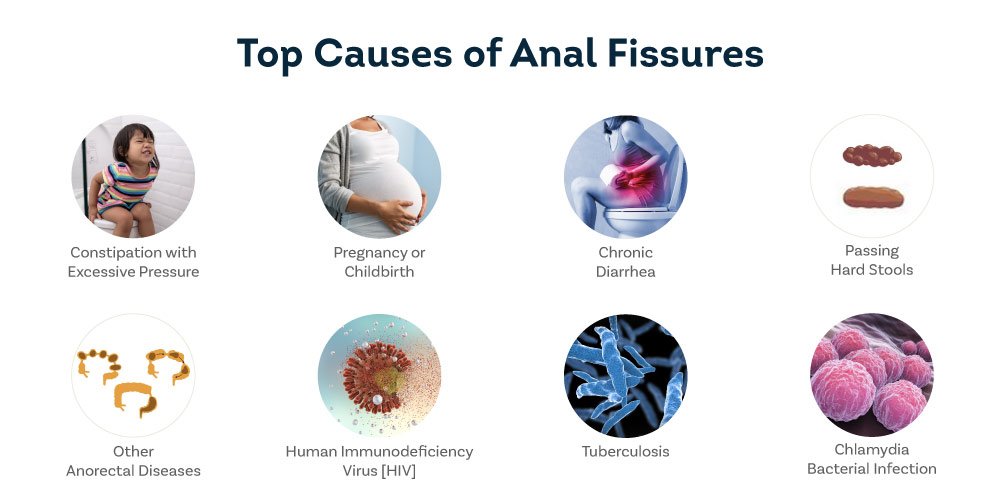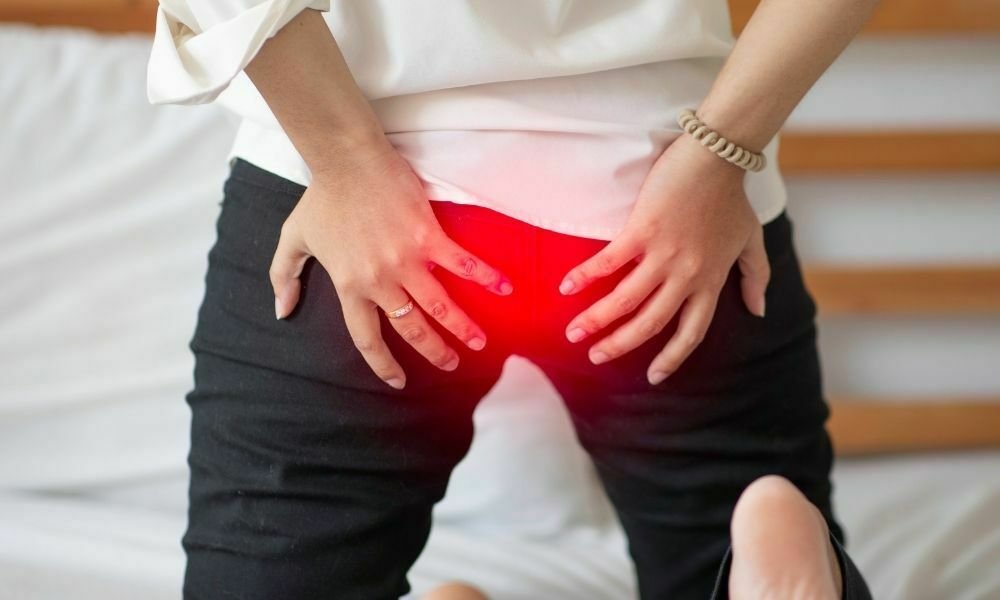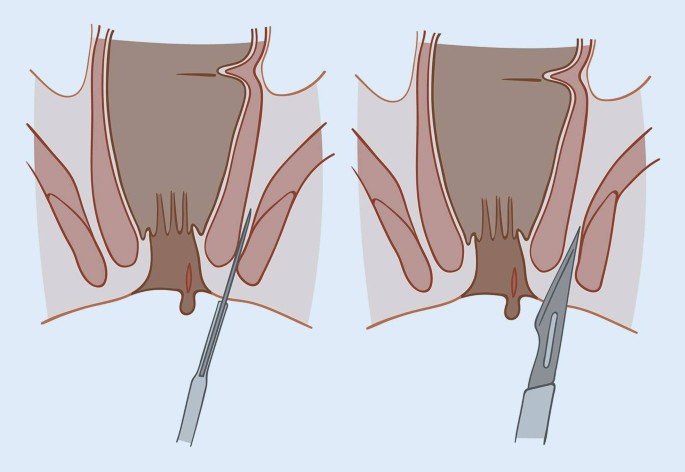Anal fissure
An anal fissure is a tear in the lining of the anus or anal canal (the opening through which stool passes out of the body). The fissure can be painful and may bleed.

Causes
- Chronic (long-term) constipation
- Straining to have a bowel movement, especially if the stool is large, hard and/or dry
- Prolonged diarrhoea
- Anal sex, anal stretching
- Insertion of foreign objects into the anus
- Longstanding poor bowel habits
- Overly tight or spastic anal sphincter muscles (muscles that control the closing of the anus)
- Scarring in the anorectal area


Signs and symptoms of an anal fissure:
- Pain during, and even hours after, a bowel movement.
- Constipation
- Blood on the outside surface of the stool
- Blood on toilet tissue or wipes
- A visible crack or tear in the anus or anal canal
- Burning and itching that may be painful
- Discomfort when urinating, frequent urination, or inability to urinate
- Foul-smelling discharge

Diagnosis And Test
Usually, your Surgeon can diagnose an anal fissure by visual inspection of the anus or by gentle exam with the tip of the finger.
MANAGEMENT AND TREATMENT
The goal of anal fissure treatment is to lower the pressure on the anal canal by making stools soft, and to ease discomfort and bleeding. Conservative treatments are tried first and include one or more of the following:
- Preventing constipation using stool softeners, drinking more fluids while avoiding caffeine-containing products (which cause dehydration), and dietary adjustments (increase in intake of high fiber foods and fiber supplements).
- Soaking in a warm bath (also called a sitz bath), 10 to 20 minutes several times a day, to help relax the anal muscles.
- Cleansing the anorectal area more gently.
- Avoiding straining or prolonged sitting on the toilet.
- Using petroleum jelly to help lubricate the anorectal area.
Surgery: Lateral sphincterotomy
A fissure may fail to heal because of scarring or muscle spasms of the internal anal sphincter muscle. Surgery usually consists of making a cut to a small portion of the internal anal sphincter muscle to reduce pain and spasms and allow the fissure to heal. Cutting the muscle rarely results in the loss of ability to control bowel movements.
The surgery can usually be performed on an outpatient basis (the patient goes home the same day). Pain is relieved after a few days and complete healing takes place in a few weeks.

PREVENTION
- Keep the anorectal area dry.
- Wipe the area with soft materials, a moistened cloth, or cotton pad. Avoid rough and scented toilet paper.
- Promptly treat all occurrences of constipation and diarrhoea.
- Avoid irritating the rectum.
